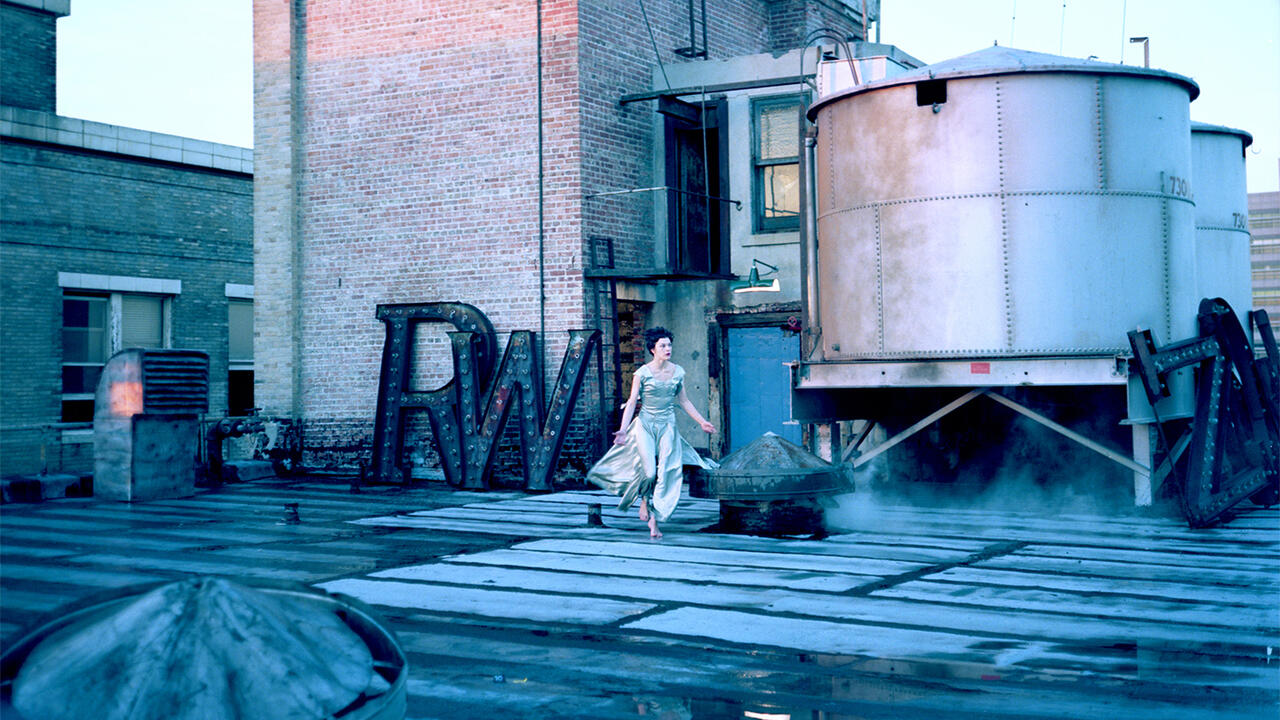Heavenly Creatures is a 'Murder Story With No Villains'
Peter Jackson's 1995 adaptation of the illusory, hallucinated and 'frightfully romantic' world of Borovnia
Peter Jackson's 1995 adaptation of the illusory, hallucinated and 'frightfully romantic' world of Borovnia
In the fragmentary discourse of the lover, says Roland Barthes, 'the lover's rejection of reality is pronounced through a fantasy; everything around ...changes value in relation to a function...the lover then cuts himself off from the world, he unrealises it because he hallucinates from another aspect the...utopias of his love; he surrenders himself to the image, in relation to which all "reality" disturbs him.' The unreal, Barthes notes, has been 'uttered, abundantly (a thousand novels, a thousand poems)', yet there is no illusion wrought by love that is quite as strange and disturbing as the one shared by Pauline Parker and Juliet Hulme.
A domestic scene early in the romance: Mario Lanza's flamboyant tenor booms from the record player in the parlour of an otherwise quiet New Zealand home. Two girls whirl about, all bright eyes and giggly, but they are not the two innocent school girls you see before you. They are not Juliet, the tubercular beauty, and Pauline, the sullen clumsy merchant's daughter; they are Deborah, the graceful lithe queen of Borovnia and at her side is her devoted companion, Gina, the dark haired mysterious gypsy woman. Borovnia resembles the cathedral town of Christchurch, only as its total opposite. In Borovnia, Queen Deborah worries for her son, heir to the Borovnian throne and a mini-tyrant who serially murders his nannies and bears an eerie resemblance to Orson Welles. Never mind that the Queen and her subjects are clay figures, their sublime principality a lawn at Llam, Juliet's home, and their castle one of sand. In the carnivalesque land of Borovnia there are always fairs, festivals, balls, affairs, orgies and the like to occupy the queen and her court. It is a world obsessively imagined, discussed and written, yet it does not exist outside of this discourse. Consumed by their fiction, Deborah and Gina regard the outside world as nothing but an annoyance; only Borovnia - illusory, hallucinated, and 'frightfully romantic' - is real.
Yet, this fictive world is part of Peter Jackson's Heavenly Creatures, a film based on the 'True Story of a Crime That Shocked a Nation'. This is the account of Honora Parker's death at the hands of her daughter and her school chum. A murder case so sensational, so notorious, that the names Pauline Parker and Juliet Hulme would years later be emblazoned alongside those of Lizzie Borden and Ma Barker on the cover of The Mammoth Book of Killer Women. A true story whose real life murderous climax seems more like the plot twist of a gripping novel than something that was ever lived. Aware that some may wonder whether 'two such heavenly creatures are real', the film maker deftly deploys the 'reality effect'. The film was shot on location on the grounds of the former Hulme household, Christchurch Girls' High School, and at various spots around the town of Christchurch itself. A nation-wide search was launched in New Zealand to find an actress with an uncanny resemblance to Pauline. By working local flavour for all it is worth and including faithful excerpts of Pauline's diary, we are dissuaded of any lingering doubts about the veracity of the story. However, those snippets of Pauline and Juliet's real world don't go far in explaining their final deed. The murder they committed is comprehensible only as a close encounter with another world: the will to murder is the by-product of a crack in the wall dividing fiction from reality. Borovnia seeps through the crack and infiltrates the everyday realm, taking fantasy out of the mind and into the world at large.
What to make of this pair. Were they 'stark staring mad' or merely evil? Were they homosexual? Were they hysterical? At their trial, expert witnesses tried to answer these questions, offering explanations predicated on the notion that insanity and homosexuality were both 'conditions', or pathologies, that could be a motive for murder. The casual kiss, the desperate embrace and the constant companionship all gave cause for grave concern. Testimony is given that the girls slept in one another's beds, bathed together and dressed together. Yet, just as no two experts could decide if the pair were insane, no two could decide if their relationship was homosexual. The jury and magistrate stepped in and Deborah and Gina were found guilty of murder and proclaimed sane by the jury. Sentenced to an indefinite period of imprisonment, they were paroled five years later on the condition that they should never see one another again. Absolved of a brutal murder after only five years, it is clear that it was not the cold blooded killing that was their transgression, but rather their 'unnatural' and 'obsessive' relationship. By demanding this separation, the court criminalised their relationship and their bond.
Director Peter Jackson describes his film as 'a murder story about love, a murder story with no villains'. His portrayal of Juliet Hulme and Pauline Parker's case casts them as star-crossed lovers who wanted only to be together. Only the participants know this to be true or false, but to the law, to the families and to many of the psychiatrists called as expert witnesses, this was the truth. The two girls were believed to have killed for their love for one another and for their love of their world. A world which we finally share through Jackson's extraordinary fantasy scenes of morphing gardens, sumptuous castle courtyard fairs and the interior of sandcastle brought to life. With their world made real, the story seems to properly return to the realm of the fairy-tale from which it first strayed.
























